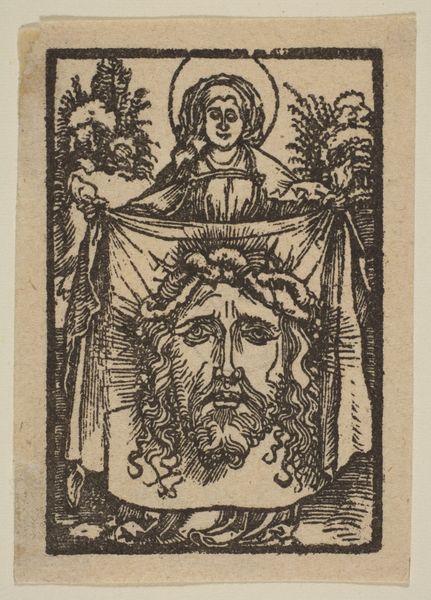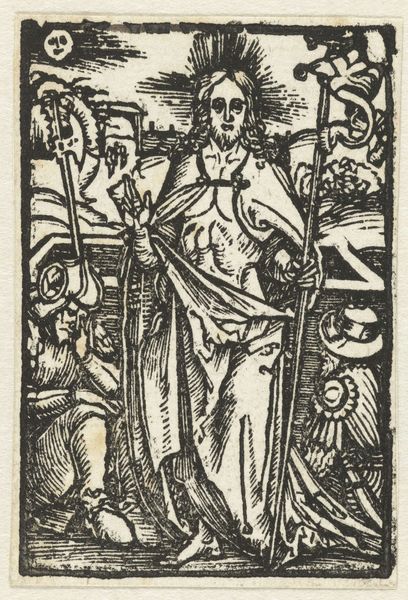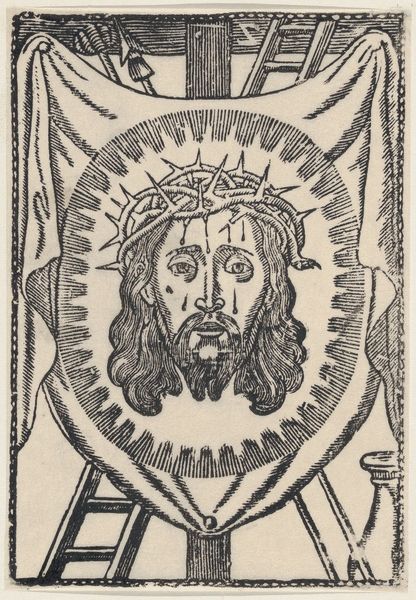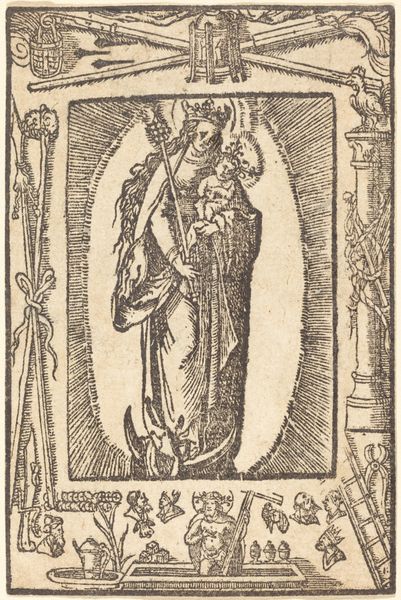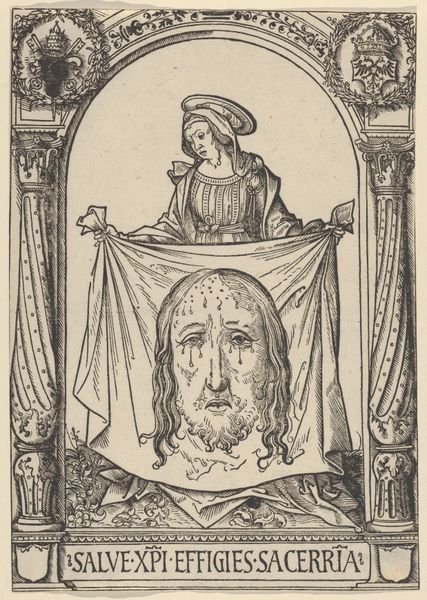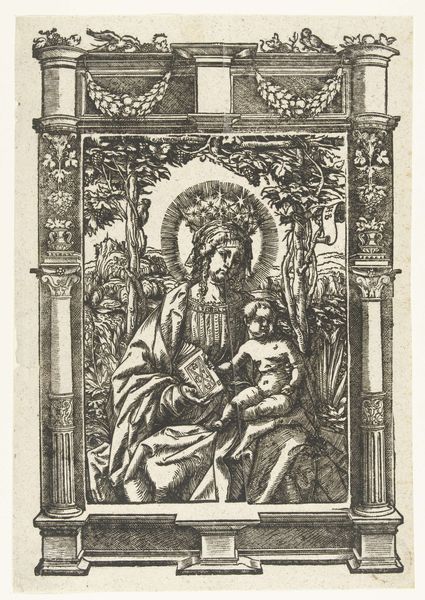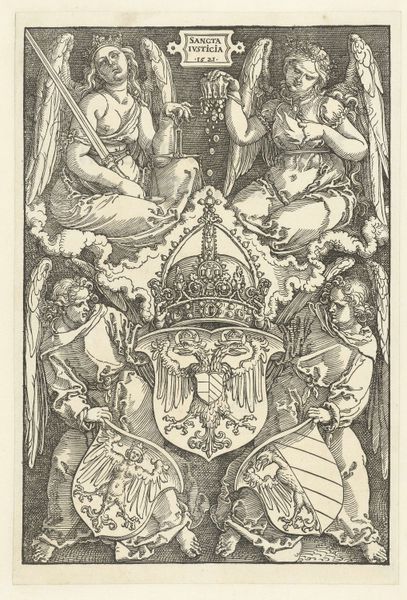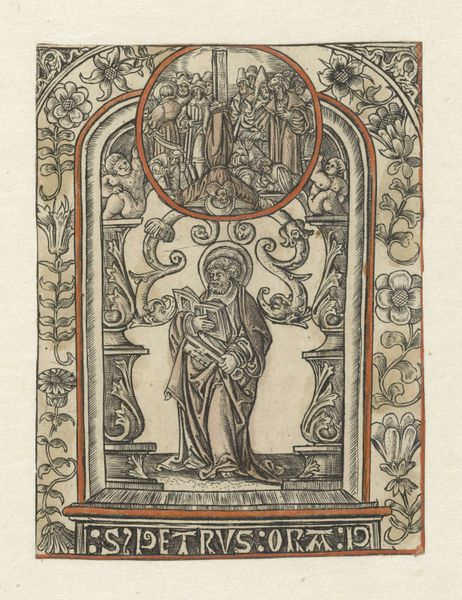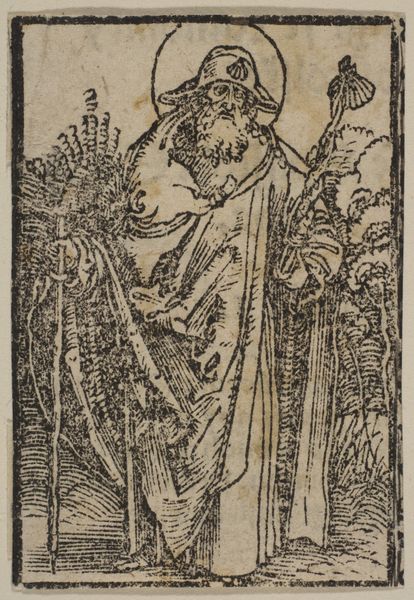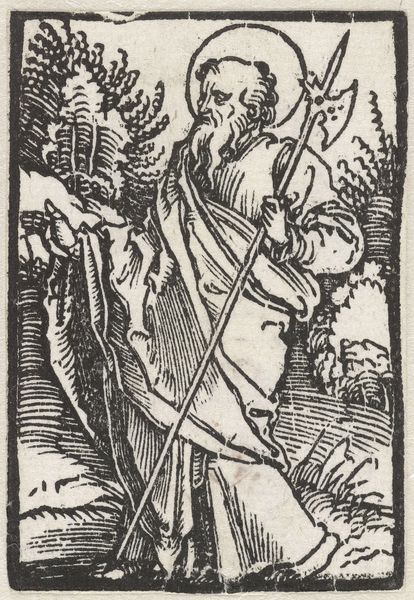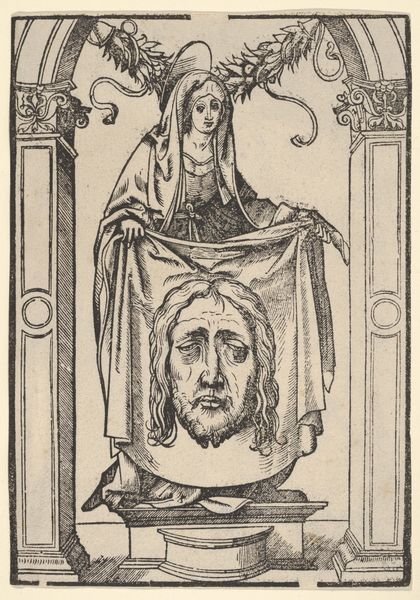
print, engraving
#
portrait
#
pen drawing
# print
#
line
#
northern-renaissance
#
engraving
Dimensions: height 62 mm, width 43 mm
Copyright: Rijks Museum: Open Domain
Editor: This is Albrecht Dürer's "Heilige Veronica," created around 1503. It's a print, an engraving. The detail achieved in such a small-scale work is astonishing. What strikes me is the almost confrontational gaze of Christ. What do you see in this piece, beyond the technical mastery? Curator: This work resonates deeply when viewed through the lens of the period’s religious and social anxieties. The Vera Icon, the 'true image' of Christ, was itself a contested object. Dürer, working during the rise of humanist thought and just before the Reformation, creates a powerful statement about image, faith, and authenticity. Veronica's act of compassion—wiping Christ's face—becomes an act of preserving a challenged faith. How does this act of preservation echo in contemporary struggles against erasure? Editor: So, it’s not just about the image of Christ, but about the very act of preserving religious stories and icons, especially during a period of upheaval. I hadn’t thought of it that way. The act of Veronica embodies a form of resistance. Curator: Precisely! Think about the social function of art at the time: it was a medium of communication, of reinforcing cultural values, and of challenging power structures. Dürer’s choice to depict this specific scene, and the intense emotionality he imbues it with, can be interpreted as an active engagement with the anxieties of his time. How does that influence the modern understanding of religious images and representations of the Divine? Editor: I guess I’m seeing that understanding the historical and religious climate in which it was made gives it so much more power. The engraving transforms from a simple devotional image to a powerful social statement about the preservation of faith, in defiance of the sweeping historical events happening around it. Curator: Exactly. Art gives form to complex ideas, allowing conversations between eras and movements. Editor: This really opens my eyes to the depth hiding within a small print. Thank you!
Comments
No comments
Be the first to comment and join the conversation on the ultimate creative platform.
